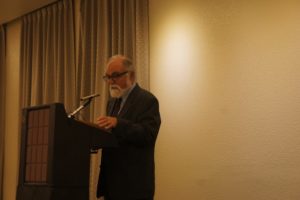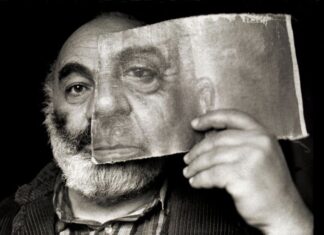By Aram Arkun
Mirror-Spectator Staff
ALTADENA, Calif. – Vatche Semerdjian’s new publication Lusartsargin dag [Under the Spotlight] was celebrated on January 30 at the Tekeyan Cultural Association (TCA) Beshgueturian Center in Altadena. A large audience of approximately 200 people listened to an extensive program of speakers interspersed with musical interludes. Under the patronage of Archbishop Hovnan Derderian, Primate of the Diocese of the Armenian Church of America (Western), and the guidance of the nimble master of ceremonies Parsegh Kartalian, Armenian writers and public figures praised Semerdjian’s career and work. Many members of the TCA Central Board from distant parts of the US attended the event to honor their colleague along with executives and members of the Los Angeles TCA branch.
Born in Beirut in 1938, Semerdjian is a graduate of the Armenian Benevolent Union’s Hovagimian Manugian Secondary School of that city. He obtained a bachelor’s degree in chemistry from the American University of Beirut in 1960. After teaching three years in the Melkonian Educational Institution of Cyprus, and then in a Lebanese school, he studied a year in Belgium and then obtained certification as a specialist in leather manufacturing from a London school. For a decade he worked as a specialist in this field in Ethiopia and for one year in Afghanistan. Political instability in Ethiopia and the Middle East led him to bring his family to the United States in 1976, where he became active in TCA and the ADLP. After the last leather treatment factory in California closed, he was offered a position in the TCA Arshag Dickranian School as a teacher of Armenology in the middle school section. Years earlier he had been one of the active founders of this school. He worked there from 1997 to 2009, after which he retired at the age of 71.










